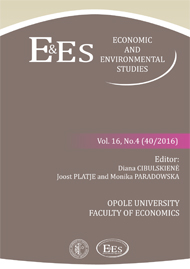Post-coagulation sludge management for water and wastewater treatment with focus on limiting its impact on the environment
Post-coagulation sludge management for water and wastewater treatment with focus on limiting its impact on the environment
Author(s): Ewelina ŁukasiewiczContributor(s): Monika Paradowska (Editor), Joost (Johannes) Platje (Editor), Diana Cibulskienė (Editor)
Subject(s): Economy
Published by: Uniwersytet Opolski
Keywords: post-coagulation sludge; sludge management; water treatment
Summary/Abstract: Water treatment process produces great amount of sludge. According to growing interest in sustainable development and environment protection, sludge management problem should be taken into consideration.Accordingly, its recovery, recycling and reuse are optimal solutions for Water Treatment Sludge(WTS) management. The conventional Water Treatment Plants (WTP) produce even up to 100 000 ton/year of sludge. The coagulation process produces a huge amount of sludge. This contamination may be recovered and reused. Some amount of coagulants may be recovered and reused during the wastewater treatment process. The Water Treatment Sludge with e.g. iron or alum content, may be also used as a coagulant at a wastewater treatment plant. In the course of this paper, few methods for post-coagulation sludge management are presented.
Journal: Economic and Environmental Studies
- Issue Year: 16/2016
- Issue No: 4 (40)
- Page Range: 831-841
- Page Count: 11
- Language: English

